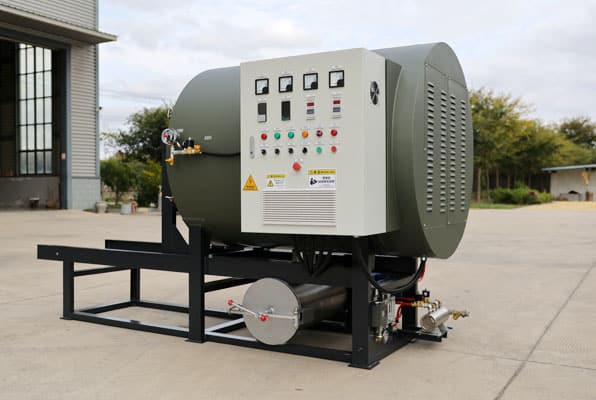In precision manufacturing, microscopic contaminants on component surfaces can lead to product failures. Industries such as aerospace, medical devices, and high-precision electronics now demand cleanliness standards at micron and even nanometer levels. This article provides an in-depth examination of how vacuum cleaning furnaces achieve over 99.9% cleanliness through unique technological combinations, along with practical parameter settings for real-world applications.
1. Why Traditional Cleaning Methods Struggle to Reach 99.9% Cleanliness
1.1 Limitations of Conventional Methods
- Solvent cleaning: Leaves residual films (0.5-1μm)
- Ultrasonic cleaning: Creates uneven cavitation (blind spot contamination)
- Spray cleaning: Causes mechanical stress damage to precision components
1.2 New Standards for High-Precision Cleanliness
- Aerospace: SAE AS4059F Class 3 (≤5mg/m²)
- Semiconductor: VDA19.1 standard (≤0.1μm particles)
- Medical implants: ISO 19227-2018 (zero bioburden)
2. Four Core Technologies of Vacuum Cleaning Furnaces
2.1 Multi-Stage Vacuum System Design
- Primary pump: Reduces chamber pressure to 1×10⁻²mbar
- Roots pump: Quickly achieves 5×10⁻³mbar
- Molecular pump: Ultimately reaches 5×10⁻⁴mbar (100x better than conventional cleaning)
Table: Cleaning Effectiveness at Different Vacuum Levels
| Vacuum Level (mbar) | Contaminant Removal Rate | Suitable Contaminant Types |
|---|---|---|
| 10⁻¹ | 85-90% | Surface oils |
| 10⁻² | 92-95% | Oligomers |
| 10⁻³ | 97-99% | Catalyst particles |
| 10⁻⁴ | >99.9% | Nano-scale adsorption layers |
2.2 Precision Thermal Decomposition Technology
- Gradual heating: 50℃→350℃ in 6 stages (±2℃ accuracy)
- Molecular vibration desorption: Breaks contaminant bonds at 200-280℃
- Patented thermal field design: 3D uniformity ±3℃ (conventional ±15℃)
2.3 Inert Gas Activation System
- Pulsed nitrogen injection (alternating 0.5-2bar pressure)
- Gas purity 99.9995% (O₂<0.5ppm)
- Temperature-coordinated flow control algorithm
2.4 Real-Time Monitoring and Feedback
- Quadrupole mass spectrometer for volatile analysis
- Laser particle counter (0.1μm resolution)
- Dynamic parameter adjustment (updates every 30 seconds)
3. Five Key Parameters for Achieving 99.9% Cleanliness
3.1 Temperature-Time Optimization
- Polymer residues: 280℃×120min+350℃×30min
- Metalworking oils: 180℃×90min (prevents carbonization)
3.2 Vacuum Maintenance Strategy
- Stepwise pressure holding: 10⁻²mbar(20min)→10⁻³mbar(40min)
- Automatic compensation for sudden pressure fluctuations
3.3 Gas Purging Protocol
- Nitrogen pulse frequency: 15 times/minute (thick-section components)
- Purge angle: 45° cross-nozzle design
3.4 Cooling Rate Control
- Gradual cooling from 350℃→80℃ (5℃/minute)
- Prevention of stress cracks from rapid cooling
3.5 Post-Processing Techniques
- Optional vacuum plasma-assisted cleaning
- Surface energy verification (contact angle <10°)
4. Industry Application Case Studies
4.1 Aircraft Engine Blade Cleaning
- Challenge: Nickel alloy casting residues (Inconel 718)
- Solution: 10⁻⁴mbar+320℃×4h+argon purging
- Result: Particle residues reduced from 2000/cm² to <5/cm²
4.2 Medical Orthopedic Implants
- Problem: Titanium surface biofilm removal
- Innovation: Vacuum-UV synergistic treatment
- Verification: Passed ISO 11737-2 sterilization test
5. Future Technology Directions
- AI-powered self-learning parameter systems
- Quantum-level vacuum measurement (10⁻⁷mbar range)
- Green cleaning processes (zero exhaust emissions)
Expert Recommendation: When selecting a vacuum cleaning furnace, don’t just consider nominal cleanliness levels—request third-party test reports (such as ISO 14644-1 cleanliness certification).
Have you encountered challenges cleaning specialized materials? Or need optimization solutions for specific process parameters? Please share your comments below—we’ll invite industry experts to provide solutions.

